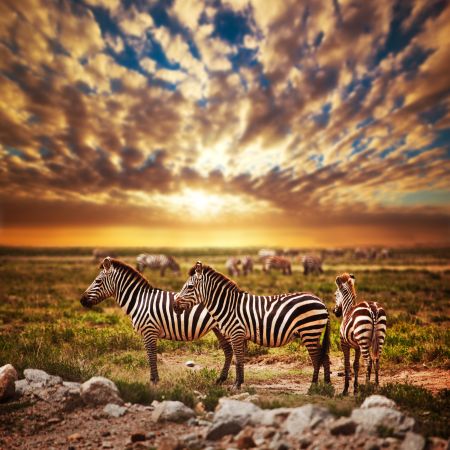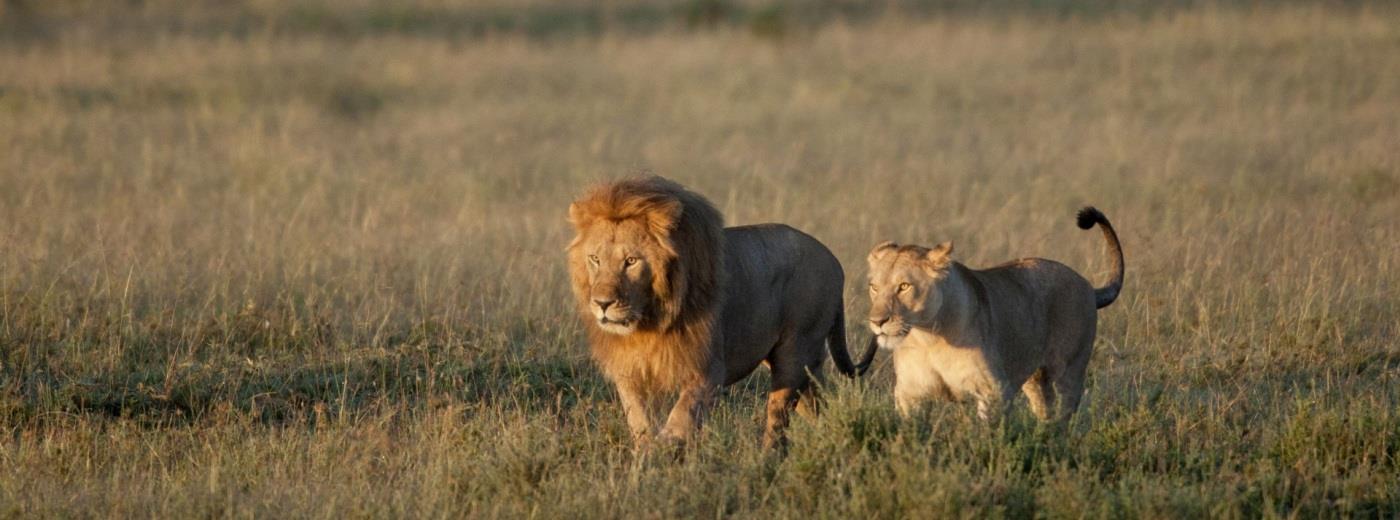The rainy and dry seasons and when to see the Great Migration
Tanzania is generally recognised as being an ‘all year round’ safari destination, with particular emphasis being during the Great Migration - especially when the herds are in the far Northern plains as visitors stand to see a river crossing. Being close to the equator, temperatures are fairly constant throughout the year, but there are still some months that are characterised by rain or humidity.
Zanzibar and the coastal regions are particularly appealing during the June to August period when temperatures are a little lower (although average highs are still around 30°C), and there is usually much less rain than at other times of year. January and February are also quite dry, although it can be humid and temperatures average around 33-34°C.
 The Rainy Seasons
The Rainy Seasons
The main rains fall in March, April and May, where heavy tropical downpours in the afternoons are a regular occurrence, making some roads impassable. What with the high humidity and daily temperatures that can reach 35 degrees C, and the fact that these months tend to be classed as a high-risk for malaria, the lodges offset these negatives with lower rates to try to attract more visitors.
The scenery is green and lush – which whilst wonderful as a backdrop to your safari shots, it does make spotting the wildlife in the thick bush slightly more difficult! The endless skies are interspersed with dramatic dark storm clouds and sunlight breaking through in patches, and the rain takes away the dust in the air, so for photographers looking for a stunning photo opportunity with very few other tourists around, this is the time to travel here.
It also normally rains again during November/early December, but the rain that does come down tends to be less tropical and heavy – rather, the pattern tends to be short, fresh downpours followed by clear skies and sun.
Birders will love this time of the year as this is when there are many migrant bird species to be seen, showing off their brightly coloured breeding plumage which is beautiful enough to turn anyone into a birding fanatic.
The Dry Seasons
From June through to the end of October is the long dry and relatively cooler season. The chances of rain are highly unlikely, and the temperatures are less humid, making these months a truly lovely time to visit the country. The vegetation dries out, making it easier when out on game drives to track the wildlife, plus the animals are more dependent on water holes and riverine areas so game viewing around these areas is particularly rewarding.
Mid to late December through to February are also dry months, but the weather becomes increasingly hot and humid. In particular, Christmas is also a very popular time for visitors, so if you are planning on travelling over these months, do be prepared for high rates and please ensure that you book well in advance or else you may find that your first, second, third or even fifth choice of accommodation is not available.
The Great Migration
In terms of when to visit to witness the Great Migration, the best months are from May to July, when the plains are fertile and full of grazing wildlife, and from October to March when they return to calf. July in particular gets very busy in terms of safari visitor numbers, so early bookings are advised.
Arusha Average Max and Min Temperature
Arusha Average Rainfall (mm)
Ngorongoro Crater Average Max and Min Temperature
Ngorongoro Crater Average Rainfall (mm)
Central Serengeti Average Max and Min Temperature
Central Serengeti Average Rainfall (mm)
Zanzibar Average Max and Min Temperature
Zanzibar Average Rainfall (mm)

